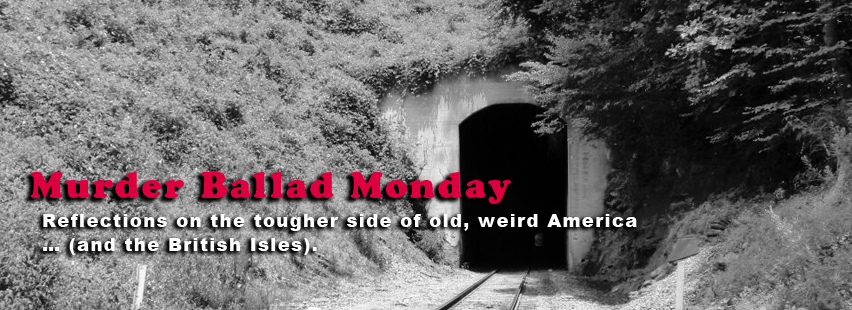Time, Truth, and Tempest: A Titanic Playlist, Part 2

Pocket watch recovered from the Titanic, frozen at the time it entered the water
(photo by Caro Wallis, edited, Creative Commons license, flickr)
In our first post on Titanic songs, we listened to songs that emerged in the years soon after the disaster. They reflected on the events of the tragedy itself, and the lessons we might draw from it. Moving closer to the present, the details of the Titanic‘s story become less pertinent than the disaster’s symbolic value. Today’s songs, with one exception, don’t dwell so much on the facts. Instead, they explore the Titanic with all the cultural freight that those earlier songs (and literature and films) had added to it.
Part 2 of our playlist includes songs that emerged from the 1970s forward. The most monumental of these, in my estimation, is Bob Dylan’s “Tempest.” The song explores a sophisticated theme veiled by its simple structure and marathon length. It will occupy our attention at the start, but lead the way to a few other musical tangents. We’ll wrap up with a full playlist and some concluding thoughts on the value of the Titanic story.
“Tempest” by Bob Dylan
“Our songs are alive in the land of the living”
–Bob Dylan, Nobel Prize Lecture
Bob Dylan plays the long game.
Amid the critiques of Dylan’s 2012 album, Tempest, is a rather cutting review in The Guardian from Alex Macpherson. He confesses that he was unbaptized in the Church of Dylan, but he immersed himself in this album. It left him unimpressed, even after multiple listens. He mordantly alleges that the work, and especially the title track, “makes you wish you’d been on board” the Titanic. “Tempest” (the song) is Dylan’s musical retelling of the Titanic disaster. It is a full collision compared to the glancing blow Dylan gives it in “Desolation Row.”
I didn’t share Macpherson’s opinion of the album or the song on my first listen. I have been a member of the Church of Dylan, Orthodox since the late ’80s. That plodding, repetitious 14-minute title track made me curious, though. Dylan’s songs present layers of mystery. I try not to impose my timetable on when they should reveal their secrets. MacPherson neglects to mention the song’s heritage in the Carter Family’s song, “The Great Titanic,” which is one pertinent secret.
I’ll concede MacPherson’s allegation that the arrangements on Tempest tend to the repetitious. Given the content, though, Dylan clearly practices a particular kind of balladry in the title track. There’s a method to his monotony. It is simultaneously traditional and post-modern. In this case, the Carters’ template is Dylan’s point of embarkation. Old and new, the past and the present play with one another.
(Lyrics here. I could not find a usable version of this on YouTube. All of the songs in this post and songs from the previous Titanic post can be found in a Spotify playlist at the end of this post)
Tempest is among Dylan’s more religious and metaphysical albums, although it diverts from the album he initially planned. It includes murder ballads, disaster songs, and a worthy heir to “Barbara Allan” in “Scarlet Town.” The title track rests at the center of this religious and metaphysical theme. While the song presents many avenues for exploration, I will focus on one here. My reading of the song is that it offers in both its mundane and inspired moments a slowly emerging, subtle meditation on time’s capacity to rob the universe of the possible and replace it with the irrevocable. That is, things can go all kinds of ways before they happen. After they happen, there’s no going back. With Dylan, it’s all told through that great ship that went down.
We discussed in the last post how religious themes of human pride and God’s judgment were common in Titanic songs. “Tempest” elaborates the Titanic‘s cosmic implications, but less judgmentally. On the outside of the song, you see that it is 14 minutes to cover its 45 monotonous and occasionally awkward verses. Dylan appears to go for the cheap rhyme in more than a few of the song’s couplets. The whole is greater than the sum of the parts, though, and any verse that seems to fail in isolation becomes part of Dylan’s “long game.”
Philippe Margotin and Jean-Michel Guesdon in Bob Dylan: All the Songs write that “Events described by the songwriter conform to reality, although the first verse was inspired by the James Cameron film Titanic (1997).” I can’t see how the movie informs the verse more than the Carter Family song does, but I haven’t yet seen the movie (gasp!). The claim that “events…conform to reality,” though is a corker. They either got too bored with the song or with the real story to see how they part ways.
Dylan disavowed any such pedestrian allegiance to the facts. Andy Irvine reported in Rolling Stone Dylan’s comment about the song: “People are going to say, ‘Well, it’s not very truthful.’ But a songwriter doesn’t care about what’s truthful. What he cares about is what should’ve happened, what could’ve happened. That’s its own kind of truth.” What should have happened, what could have happened, and what did happen are the central contenders in the conflict that animates the song.



